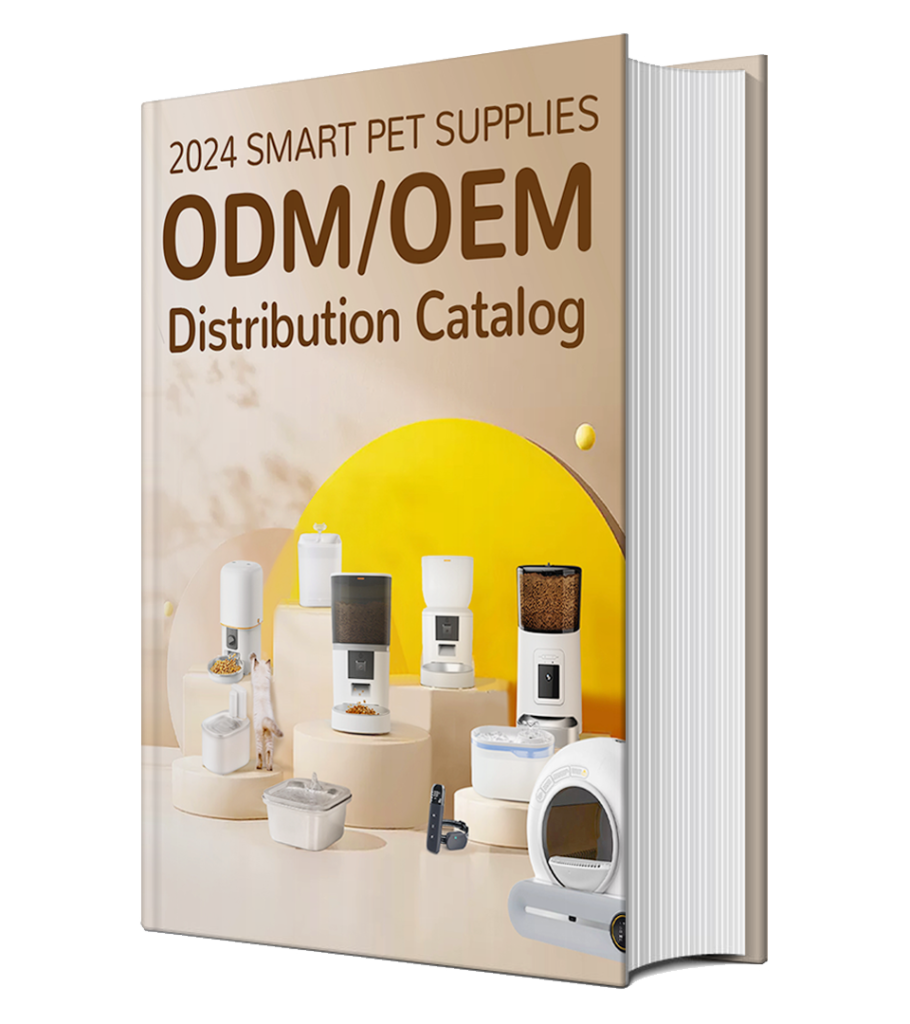Pet product mistakes may seem small at first—but in today’s fast-moving and highly competitive market, even one misstep can lead to costly delays, missed sales, or worse, damage to your brand’s credibility. Whether you’re developing a smart feeder, a self-cleaning litter box, or your next big innovation, the pressure to get it right the first time has never been higher.
At Petrust®, we’ve worked with hundreds of pet brands—startups and global retailers alike—helping them turn ideas into market-ready, scalable products. And along the way, we’ve seen what works…and what derails great concepts before they ever reach the shelves.
In this guide, we’ll walk you through the 5 most common (and costly) pet product development mistakes we still see brands making in 2025—and, more importantly, how you can avoid them with confidence.
Just getting started in the pet space? Don’t miss our beginner-friendly guide: 6 Easy Steps to Start Your Pet Business 2025 —perfect for turning your vision into something real.
Let’s help you build smarter, faster, and stronger. Keep reading.
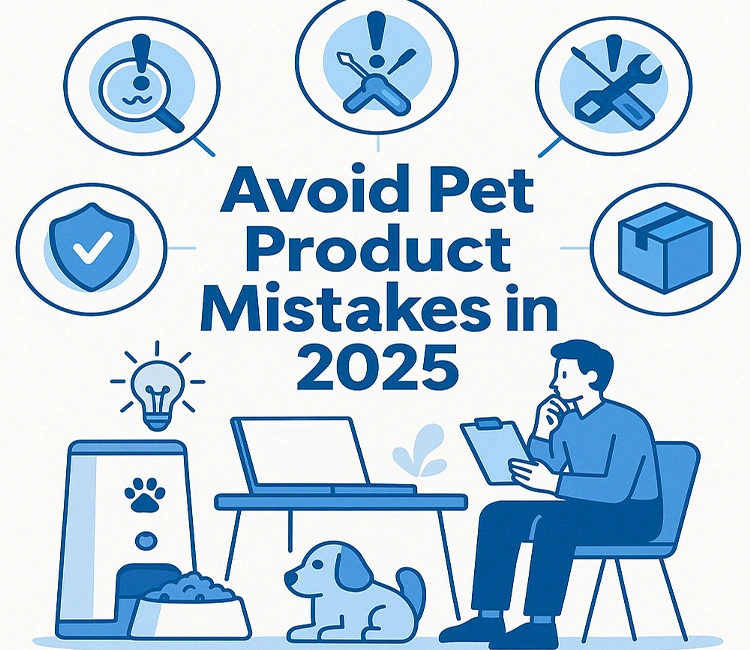
Costly Pet Product Mistakes to Avoid in 2025
Mistake #1: Skipping Research and Rushing Into Development
Cost to your business: Missed market fit, wasted investment, and poor customer satisfaction.
One of the biggest pet product mistakes we see—especially with first-time founders or fast-scaling brands—is diving into production without validating the idea first. You might be excited about your concept (we get it!), but without understanding what pet parents actually want and need, even the most innovative product can fall flat.
Just because it looks great on paper doesn’t mean it’ll succeed in the real world.
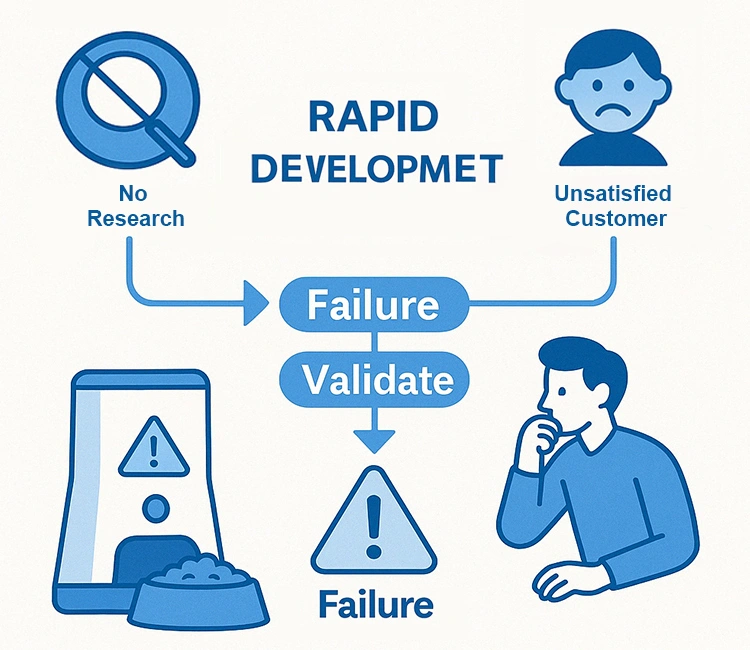
✅ How to Avoid This Costly Mistake
Do your homework
Check Amazon, Chewy, TikTok, and other platforms for top-rated products and real customer reviews. Look for pain points, unmet needs, and keywords customers use again and again.
Talk to your audience
Run quick surveys, host informal interviews, or use online communities to understand your target pet owner’s daily routines, frustrations, and product preferences.
Test before you scale
Start with a prototype or a small production batch. Gather feedback, iterate, and improve before committing to a large inventory.
Stay informed
Make sure your idea isn’t already outdated. Check out our expert insights on Top Pet Product Trends in 2025 to make sure your offering aligns with where the market is headed.
Mistake #2: Overlooking Material Safety and Certification
Cost to your business: Failed safety audits, product recalls, legal trouble, and worst of all—lost customer trust.
When it comes to pet product design, one of the biggest (and most avoidable) pet product mistakes is using unsafe or uncertified materials. Remember—pets don’t use products the way humans do. They chew, lick, scratch, sleep on, and sometimes even eat the items we create for them. That means every material choice must be made with health and safety as a top priority.
Too many brands cut corners to save costs, only to face failed inspections, negative reviews, or worse—returns and recalls. In today’s health-conscious, compliance-driven market, material safety isn’t optional—it’s essential.
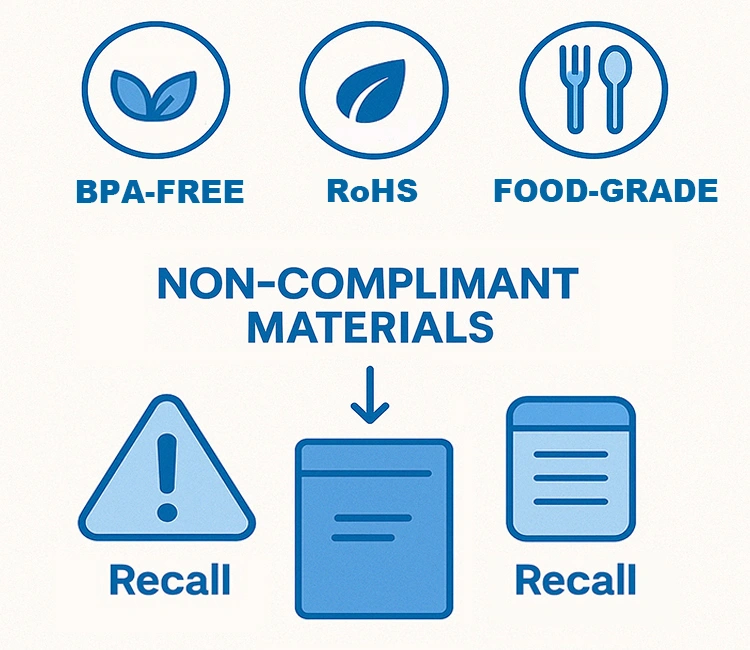
✅ How to Avoid This Mistake
Stick to Certified, Pet-Safe Materials
Always choose food-grade, BPA-free, and RoHS/REACH-compliant plastics, silicones, and metals for anything pets touch, chew, or eat from. These certifications are more than labels—they’re your insurance policy against regulatory and consumer backlash.
Request Compliance Documents Early
Don’t just take your manufacturer’s word for it. Ask for full compliance documentation and third-party lab reports before approving any final design or placing a bulk order.
Go the Extra Mile with Antimicrobial or Eco-Friendly Options
Today’s pet parents care about cleanliness and sustainability. Incorporating antimicrobial coatings, biodegradable plastics, or recycled materials not only boosts safety but also makes your product more marketable.
Pro Tip from Petrust®
At Petrust®, we only use verified, pet-safe materials—and we’re happy to provide the certification paperwork for every pet product we manufacture. It’s part of our commitment to helping you build a brand that’s not just innovative, but trusted.
Keep your standards high. Your customers (and their pets) will thank you.
Mistake #3: Overcomplicated Pet Product Design
Cost to your business: Delayed timelines, high tooling expenses, negative user feedback.
Overdesigning – it’s easy to fall into the trap of adding too many features, too many parts, or creating mechanisms that look impressive—but leave pet owners scratching their heads.
From hard-to-clean feeders to self-cleaning litter boxes with clunky interfaces, poor design choices can lead to skyrocketing manufacturing costs, slow production, and unhappy customers. And in the pet space, ease of use is everything—especially when your end users are busy pet parents.
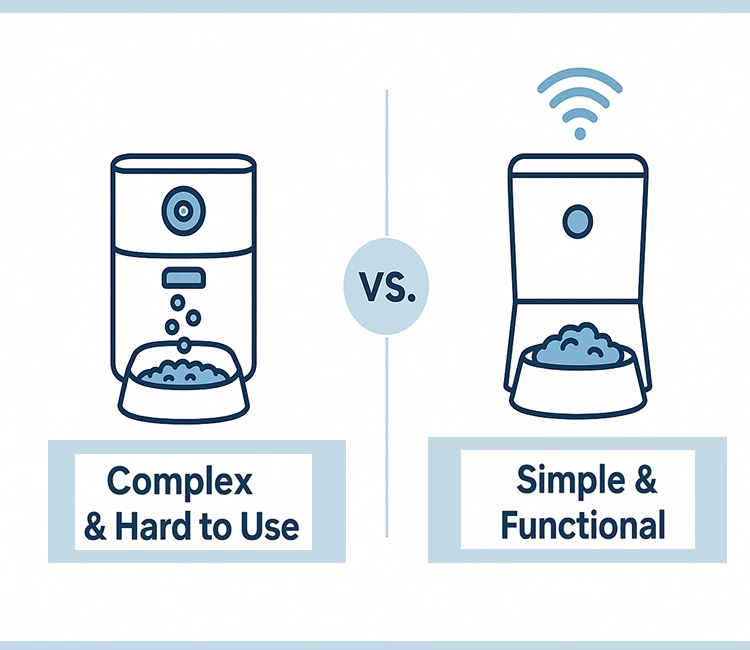
How to Avoid This Pitfall
✅ Work with a manufacturer that offers DFM (Design for Manufacturability) support to ensure your concept is practical, scalable, and production-ready.
✅ Start lean with a Minimum Viable Product (MVP) to test user feedback before committing to full-scale production.
✅ Prioritize intuitive functionality—products should be easy to assemble, clean, and operate without a manual.
Not sure whether to take the OEM or ODM route for your product?
Check out our guide: How to Choose the Right Model for Your Pet Brand: OEM vs. ODM—it’s packed with insights to help you balance innovation, customization, and speed to market.
Smart design doesn’t just look good—it performs better, costs less, and keeps your customers coming back.
Mistake #4: Overlooking the Pet Owner Experience
Cost to your business: Low user engagement, negative reviews, and high return rates.
It’s easy to focus so much on the pet that you forget about the person actually buying, using, and maintaining the product—the pet owner. But here’s the truth: even the smartest, most beautifully designed product will fail if it’s inconvenient, frustrating, or confusing to use.
If a litter box is a nightmare to clean, a feeder is noisy at 3AM, or an app crashes constantly—your customers will walk away, no matter how impressive the tech sounds on paper.
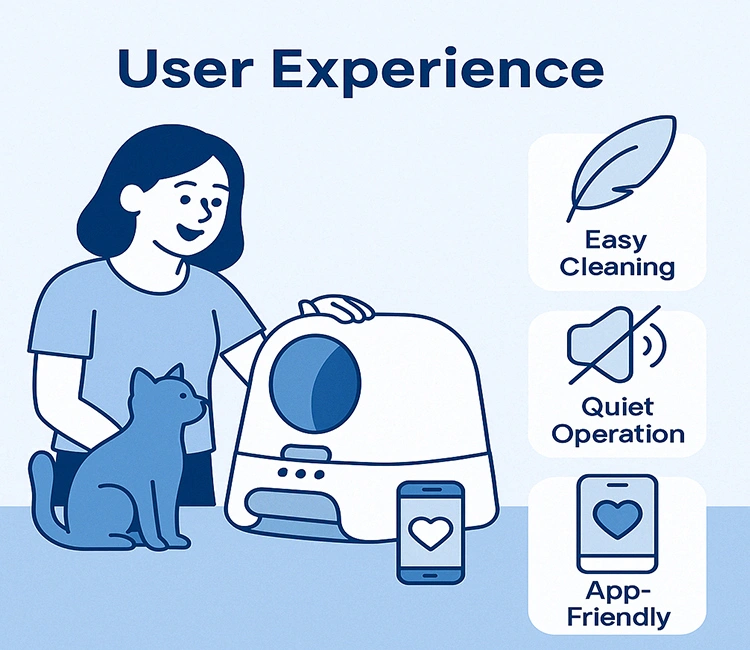
✅ How to Avoid This Costly Mistake
Design with the human in mind
Your pet product should blend into a pet owner’s daily life—not disrupt it. Think about ease of use, cleaning, and setup from the customer’s point of view.
Optimize the user experience for digital features
If you’re offering smart pet products (like automatic cat litter box, automatic cat feeder, or smart cat water fountain), your app interface should be intuitive, reliable, and enjoyable to use. Pet owners shouldn’t need a tech degree to set a feeding schedule.
Eliminate design flaws early
Watch out for overlooked details like awkward ergonomics, vague instructions, or flimsy parts. These small issues often lead to returns, bad reviews, and brand mistrust.
At Petrust®, we help brands build pet products that not only work for pets—but delight their owners too. Because when pet parents are happy, your pet brand earns loyalty, word-of-mouth, and repeat sales.
Tip: Want to create a pet product that customers love using every day? Make user experience a design priority from day one.
Mistake #5: Weak Branding and Packaging That Fails to Connect
Cost to your business: Poor shelf presence, low conversion rates, and forgettable brand identity.
You could have the smartest, most innovative pet product on the market—but if your branding and packaging fall flat, your product won’t stand a chance. In today’s competitive pet care space, packaging is more than just a box—it’s a powerful marketing tool that builds trust, attracts attention, and influences buying decisions in just a few seconds.
Strong branding helps customers remember you. Great packaging gets them to choose you.
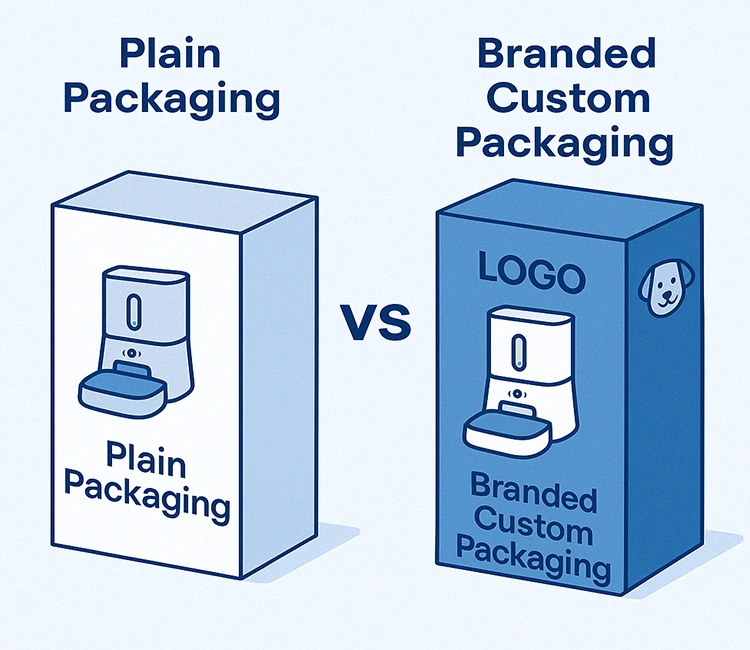
✅ How to Avoid This Costly Mistake
Collaborate with your OEM manufacturer early
Don’t leave packaging as an afterthought. Work closely with your pet product manufacturer (like Petrust®!) to create custom packaging that reflects your brand personality and positioning.
Make your key selling points obvious
Is your product ultra-quiet? App-controlled? Made from BPA-free materials? Put those messages front and center—on your box, hangtags, or inserts. Clear value = stronger sales.
Use materials that match your brand values
Whether it’s eco-friendly kraft paper or premium matte finishes, your packaging should reflect what your brand stands for. Small touches can boost perceived value—and customer loyalty.
Need some visual inspiration? Don’t miss our expert resource:
Pet Brand Packaging Design Tips for 2025 — full of ideas to help your product look as good as it performs.
Final Thoughts
Avoid Pet Product Mistakes and Launch a Successful Pet Product in 2025
Bringing a new pet product to market in 2025 doesn’t have to be overwhelming or risky—but it does take smart planning, industry insight, and the right manufacturing partner by your side. When you know what to avoid (like the 5 costly pet product mistakes we covered), you’re already one step ahead of most new brands in this fast-growing space.
The truth is, success isn’t just about having a great idea—it’s about execution. From concept to shelf, every detail matters: compliance, customization, user experience, and speed to market. Get those right, and you’re not just launching a product—you’re building a brand that lasts.
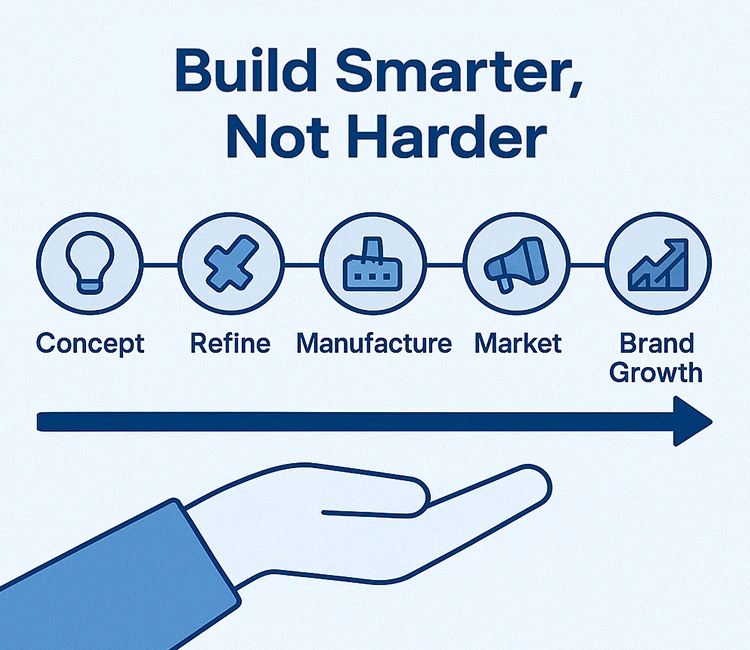
Ready to take the next step?
Before signing with any supplier, make sure to review these 10 Questions to Ask Before Choosing a Pet Product Manufacturer. They’ll help you qualify the right partners and avoid costly surprises.
At Petrust®, we’re more than just a pet product OEM—we’re your creative, technical, and strategic partner. With over 12 years of experience, we’ve helped hundreds of global brands launch successful product lines that are not only innovative but scalable.
Whether you’re preparing for your first launch, adding new SKUs, or building a private-label brand from the ground up, we’re here to guide you through every step.
Learn more about Petrust’s OEM & ODM Services: Tailored Pet Solutions for Your Brand—and let’s bring your next bestseller to life.
Recommended Reading for Pet Brand Founders
Want to keep growing your pet product brand the smart way? Don’t miss these expert guides:
- Pet Business Startup Checklist: From Idea to Launch – A step-by-step roadmap to turn your pet product idea into a real business.
- 5 Ways to Stand Out in the Pet Product Market – Learn practical ways to differentiate your brand in a crowded market.
- How to Build a Pet Product Brand on a Budget – Tips for lean launches and maximizing every dollar in your early stage.
- 15 Profitable Pet Business Ideas for 2025 – Get inspired with real-world business models and product niches.








